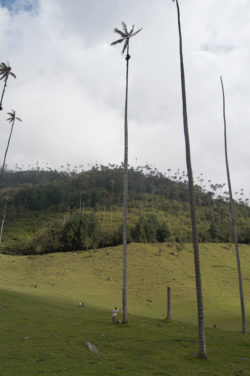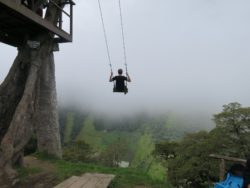Catching Up
It’s been a while since I posted last; since the Galapagos post almost two weeks have passed. Since then, we’ve worked our way through Ecuador and down into Peru. Rather than post on a few weeks’ delay, I figured I’d attempt to get up-to-date with this “catch-up” post and get better about updating between cocktails on the beach. Here’s the Cliff’s Notes version of the last month or so, excluding the Galapagos.
Salento – Going allll the way back to Colombia (wow, I really need to update the blog more), we had took the opportunity to head to Salento for a weekend visit from Cali, where we were stationed for a few weeks. Salento is in the heart of the coffee-growing region in Colombia, responsible for some of the world’s best coffee. We were able to tour a local coffee farm and sample the freshest coffee that it’s actually possible to have. Another highlight of Salento is the Valle de Cocora, which is famous for growing the world’s tallest palm trees. And lemme tell ya, these suckers are tall. Salento itself is a fun little town with a great nightlife and ample kitschy souvenirs to stuff your bag with.
Ipiales – After heading south from Cali, we stopped in the border town of Ipiales for a night, mostly so we could cross the border in the light of day, but we also were able to visit the impressive Las Lajas Sanctuary, a giant church built into a bridge across a river gorge. If there’s one thing South Americans know how to do, it’s build a cathedral, and Las Lajas is a spectacular example. Ipiales itself isn’t really anything to write home about (yes, I recognize the irony), but as a stopover for the border crossing into Ecuador, the Sanctuary easily makes it worth a second glance.
Quito – Prior to the Galapagos, we explored Ecuador’s capital city for around a week. Immediately we were struck with how modern and clean it was, especially juxtaposed directly against some of Colombia’s lesser developed cities. Ecuador is clearly more accustomed to tourism than Colombia, and it shows in the infrastructure, social programs, and activities in the capital city especially. There’s no shortage of nice hostels, restaurants, museums, and nightlife to keep you busy, and the Old Town district is fun to explore for the afternoon. Of course, nicer amenities come with a higher cost, so Quito ended up being one of the most expensive cities we’ve been in thus far. Not far from Quito we also visited the Mitad del Mundo, i.e., the equator, and Otavalo, which is famous for having the largest outdoor market in South America.
Montañita – Our first stop after the Galapagos, Montañita is a small hippie-dippie beach town on Ecuador’s Pacific Coast. After rushing around from activity to activity on the cruise, Montañita was the perfect place to just hang out and chill for a while. Our almost daily routine was to wake up, grab a breakfast crepe or omelette from the aptly named “Breakfast Row”, wander down the beach for a while, head back to the hostel for some cards or a movie with the other hostel-goers, and then have a few (or a few more than a few) of the $1.25 half-liter beers before going out to some of the bars and clubs after the sun went down.
Baños – Baños de Agua Santa, or Baños for short, is well-known for being Ecuador’s premiere destination for adventure activities. Offering zip lining, bungee, rafting, canyoning, hiking, and more, Baños is where you want to be if you want to scratch that active itch. We flew on a 1.5 kilometer zip line, and we signed up for white-water rafting as well, although that plan was scrapped because not enough people registered for that day. Also famous in Baños is the Casa del Arbol, which is a treehouse on the precipice of a mountain overlooking the city which houses the Swing at the End of the World. We ended up here on a holiday, so we had to wait an hour or so in line, but eventually we got our stereotypical swinging picture that looks much scarier than it actually was.
Máncora – Our first stop in Peru, Máncora is another laid-back beach town famous for its surfing (somehow we keep ending up at those!) The highlight here was actually the hostel we stayed at: Loki Hostel. More like a resort than a hostel, it features a huge pool, in-house bar and restaurant, and twice-daily activities ranging from a giant slip-n-slide, beer pong tournament, blacklight party, and the pirate party that we unfortunately had to miss on the evening of our departure. There are Loki hostels all across Peru, Bolivia, and Argentina, so we’re looking forward to comparing and contrasting when we get to another city that has one.
We’re now sitting in Huanchaco, which is, you guessed it, another beach town, and in a couple days we’ll be heading to Cajamarca, famous for its Incan ruins and artifacts. Hopefully it won’t be another two weeks before an update!













Thanks for the update, Sean….I’m loving your posts. What fun!!! xoxo